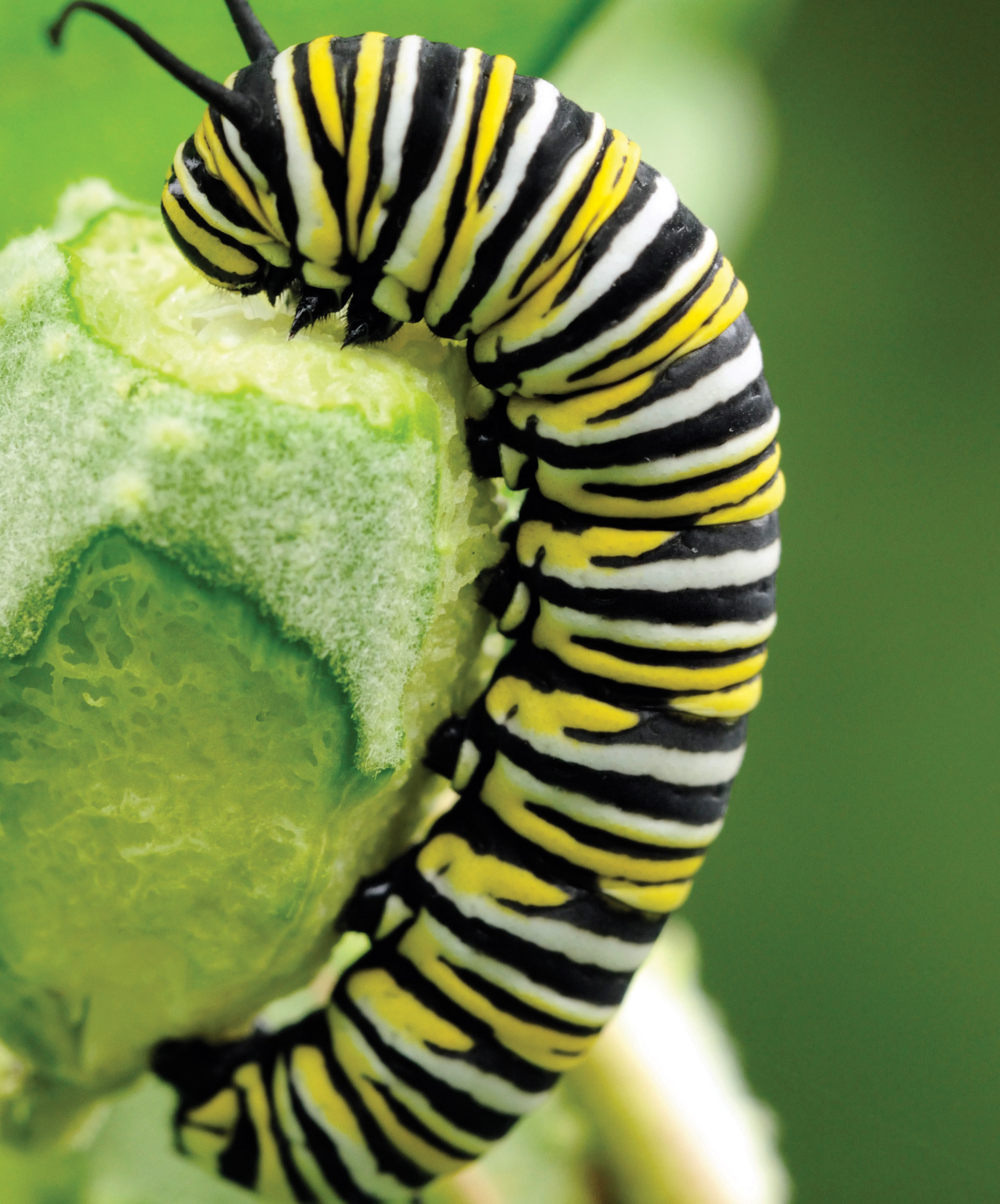CHAPTER 32 INTRODUCTION
CORE CONCEPTS
32.1 Plants have evolved mechanisms to protect themselves from infection by pathogens, which include viruses, bacteria, fungi, worms, and even parasitic plants.
32.2 Plants use chemical, mechanical, and ecological defenses to protect themselves from being eaten by herbivores.
32.3 The production of defenses is costly, resulting in trade-offs between protection and growth.
32.4 Interactions among plants, pathogens, and herbivores contribute to the origin and maintenance of plant diversity.

Plants have complicated interactions with animals. As we saw in Chapter 30, many plants rely on animals for pollination or seed dispersal. In return, plant seeds provide a rich source of food for animals, and leaves also furnish a vast, if lower-quality, food resource. The plant body also provides habitats for an array of viruses, bacteria, and protists, not to mention other plants, that grow on or within their tissues. How do plants defend themselves against the animals that would eat them? How do they defend against pathogens? The answers to these questions help us understand how plant populations are distributed in nature, and they help us solve practical problems as well. In the United States alone, crop damage by herbivores and pathogens costs farmers more than $2 billion every year.
The English poet Alfred, Lord Tennyson, created an indelible image: “Nature, red in tooth and claw.” But that image does not recognize that some of the fiercest battles in nature are waged between plants and their predators.
Plants can’t run away and hide, and so they lack a key defense employed by animals. Nonetheless, they can sense danger and are able to deploy a diverse and powerful defensive arsenal. Plant defenses include physical and chemical deterrents as well as aerial surveillance, armed guards, and sticky traps.
Of particular importance to humans, plants produce a wide array of chemicals that alter the metabolism and influence the behavior of animals that seek to consume them. These molecules also interact with our own biochemistry, and so compounds derived from plants have been used since antiquity as sources of medicine. Our early ancestors turned to the leaves and bark of willow trees in much the same way that we rely on aspirin—and for good reason. Willows produce a compound that deters herbivores and in humans relieves aches and pain; this compound in fact provides the chemical basis of aspirin. Compounds in rosemary improve the taste of food, and the compound quinine, derived from the tropical cinchona tree, is used in the treatment of malaria. Belladonna, a relative of the tomato, produces toxins that the ancient Romans used to eliminate rivals, but in very low doses it relieves gastrointestinal disorders. In fact, nearly 30% of all medicines are based on chemicals that plants produce to defend themselves.